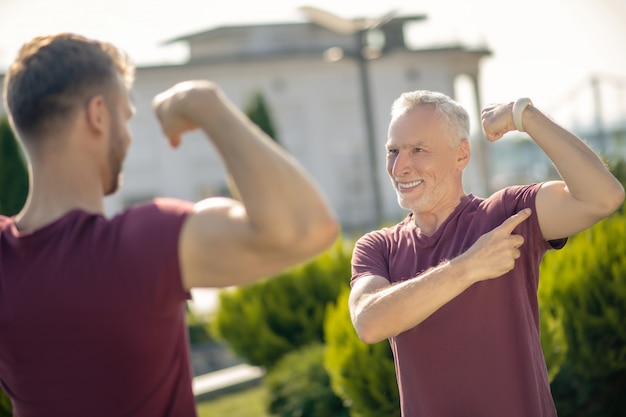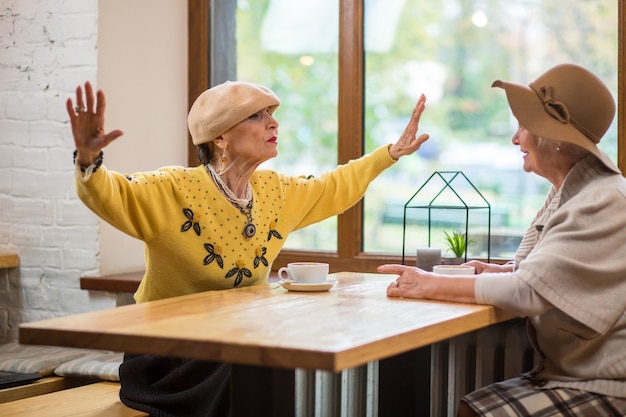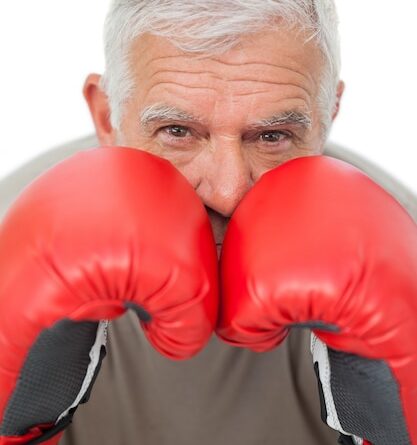The Elderly and the Law: A 77-Year-Old’s Right to Self-Defense
Quick Read
The Elderly and the Law: A 77-Year-Old’s Right to Self-Defense
As we age, vulnerability increases, and elderly individuals often become targets for crimes due to their perceived weakness. However, the law recognizes that age should not equate to powerlessness or defenselessness.
Self-defense
is a fundamental right afforded to all individuals, regardless of age. In this context, let us examine the situation of a 77-year-old and their legal entitlement to self-defense.
Understanding Self-Defense
Self-defense is the right to protect oneself against harm or threat. It applies when an individual reasonably believes that they are in imminent danger of bodily injury and must use force to protect themselves.
Stand Your Ground
laws, which allow the use of deadly force without retreating if the individual reasonably believes they are in imminent danger, have further complicated self-defense issues.
Elderly and Self-Defense
The elderly are often perceived as weaker in society, which can make them more susceptible to attacks. However, the law recognizes their right to self-defense equally. Elderly individuals are allowed to use reasonable force to defend themselves against an attack, even if they cannot inflict as much damage as a younger person. It is essential to remember that the right to self-defense does not depend on age, size, or strength.
Reasonableness
The key factor in self-defense cases is reasonableness. A 77-year-old using force to defend themselves would be assessed based on their age, size, and abilities. If a reasonable person in the same situation, with similar age, size, and abilities, would have acted similarly to protect themselves, then the 77-year-old’s actions would likely be considered reasonable.
Conclusion
Age should not limit an individual’s right to self-defense. A 77-year-old, like any other person, has the legal right to defend themselves against harm or threat, even if they cannot inflict as much damage. The law recognizes this fundamental right and assesses self-defense cases based on reasonableness. If you are an elderly individual, it is crucial to understand your rights regarding self-defense and seek legal advice if you ever find yourself in a threatening situation.

Self-Defense Rights for Elderly Individuals: Legal Framework, Challenges, and Solutions
Introduction
The right to self-defense is a fundamental principle enshrined in criminal law that allows individuals to protect themselves from harm. However, as the world’s population ages and crime rates against older adults increase, it is crucial to explore how this right applies to the elderly. In this paper, we will delve into the legal framework for self-defense by elderly individuals, focusing on the unique challenges they face and potential solutions.
Explanation of the Issue: The Right to Self-Defense for Elderly Individuals
To begin, it is essential to provide a brief overview of self-defense law and its application to older adults. Generally speaking, an individual can use reasonable force to defend themselves against an imminent threat of bodily harm. However, the specific legal standards for self-defense may vary depending on jurisdiction and circumstances. In most cases, an individual must demonstrate that they reasonably believed they were in imminent danger and that the use of force was necessary to protect themselves.
Brief Overview of Self-Defense Law and its Application to Older Adults
While the fundamental principles of self-defense apply equally to elderly individuals, their unique circumstances can pose challenges. For instance, older adults may have limited mobility, poorer reaction times, or cognitive impairments that could impact their ability to respond effectively to a threat. Moreover, their age and vulnerability might influence an attacker’s decision to target them in the first place.
Importance of Addressing this Issue
Given these challenges, it is imperative to address the issue of self-defense for elderly individuals. According to the United States Census Bureau, the number of Americans aged 65 and older is projected to more than double over the next few decades. Simultaneously, crime rates against older adults have been on the rise, with violent crimes increasing by 35% between 2008 and 2017. Therefore, understanding the legal framework for self-defense as it pertains to this population is vital to ensuring their safety and autonomy.
Thesis Statement:
In the following sections, we will explore the legal framework for self-defense by elderly individuals, discussing the unique challenges they face and potential solutions aimed at enhancing their ability to protect themselves from harm.
Background: Legal Framework for Self-Defense
Self-defense is a legal principle that permits an individual to use reasonable force to protect themselves from harm. This right is recognized and protected by law in many jurisdictions around the world. The elements of self-defense vary slightly depending on the specific legal code, but generally include the following:
Definition of Self-Defense and Its Elements
Reasonableness and Necessity: An individual may only use self-defense if they believe that the use of force is both necessary and reasonable under the circumstances. This means that the perceived threat must be immediate and serious enough to warrant the use of force. The force used must also be proportionate to the threat, meaning that it should not exceed what is necessary to protect oneself.
Imminence of Threat:
Self-defense can only be used in response to an immediate threat of harm. This means that the individual must believe that they are in imminent danger before using force. A mere fear or apprehension of future harm is not sufficient to justify the use of self-defense.
Use of Reasonable Force:
An individual may only use reasonable force to defend themselves. This means that the force used must be appropriate to the level of threat faced. For example, using a deadly weapon to defend oneself against a verbal threat would not be considered reasonable.
Justifications for Using Self-Defense: Deadly Force and Non-Deadly Force
The use of self-defense can justify the use of both deadly force and non-deadly force. The specific rules governing the use of these two types of force can vary greatly depending on the jurisdiction, but some general principles apply.
Deadly Force:
The use of deadly force is justifiable in self-defense when an individual reasonably believes that they are facing a threat of death or serious injury. This means that the threat must be immediate and imminent, and the use of deadly force must be necessary to protect oneself or another from harm. In many jurisdictions, there is a legal requirement that an individual retreat if it is safe to do so before using deadly force in self-defense.
Non-Deadly Force:
The use of non-deadly force is justifiable in self-defense when an individual reasonably believes that they are facing a threat of bodily harm, but not one that poses a risk of death or serious injury. The use of non-deadly force does not require the same level of imminence as deadly force, and there is typically no requirement to retreat before using it. However, the use of non-deadly force must still be reasonable and necessary under the circumstances.

I Challenges Facing Elderly Individuals in Exercising Self-Defense
Physical Limitations and Vulnerability
- Age-related declines in strength, speed, and reaction time: Elderly individuals often face physical limitations that make it more challenging for them to defend themselves against threats. These declines can include weakness, decreased mobility, and slower response times, which can make it difficult to react effectively in a self-defense situation.
- Health conditions and medications: Many older adults have underlying health conditions or take medications that can affect their ability to respond to a threat. For example, certain medications can cause dizziness or confusion, while health conditions such as arthritis or heart disease can limit mobility and make it more difficult to physically defend oneself.
Legal Challenges:
Demonstrating reasonableness under the circumstances: Elderly individuals may face legal challenges when attempting to use self-defense. They must be able to demonstrate that they acted reasonably under the circumstances, which can be more difficult if they are slower to react or if their physical limitations make it appear that they were not able to avoid a confrontation.
- Avoiding the perception of aggression or provocation: Elderly individuals may also be hesitant to use self-defense due to concerns about being perceived as aggressive or provocative. This can be especially challenging if the perpetrator is much younger or larger than the elderly individual, as they may fear retaliation or negative consequences from the perpetrator or their associates.
Social Challenges:
Preconceptions about the elderly as passive or helpless: Society often holds preconceived notions about older adults being passive or helpless, which can make it difficult for them to be taken seriously when using self-defense. This stigma can discourage elderly individuals from taking steps to protect themselves, leaving them vulnerable to potential threats.
- Fear of retaliation or negative consequences: Elderly individuals may also be hesitant to use self-defense due to concerns about retaliation or negative consequences. They may fear that using force against a perpetrator, even in self-defense, could result in legal or social repercussions.

Solutions and Best Practices for Elderly Individuals to Exercise Self-Defense
Legal Solutions:
- Advocacy and education on self-defense rights for the elderly population: It is crucial to ensure that older adults are aware of their legal right to self-defense. Advocacy groups, law enforcement agencies, and community organizations can help spread awareness about self-defense laws and the importance of reporting incidents to the authorities.
- Adaptations to self-defense laws, such as “elder defensive homicide” or similar statutes: Some states have adopted specialized self-defense laws to protect elderly individuals. For instance, the “elder defensive homicide” law in Florida recognizes that older adults may use deadly force to protect themselves against intruders without being subjected to prosecution for homicide. Similar statutes can provide a legal framework that encourages older adults to defend themselves effectively.
Practical Solutions: Preparation and Training:
Self-defense classes tailored to older adults:
Many traditional self-defense classes may not cater to the physical limitations and specific needs of elderly individuals. Specialized classes focusing on techniques tailored for older adults can help them build confidence in their ability to defend themselves and provide essential skills to protect against common threats, such as falls or home invasions.
Home security and personal safety measures:
Older adults can fortify their homes with various safety features to deter potential intruders or respond effectively in case of a break-in. These measures include installing alarms, cameras, and self-defense weapons like pepper spray or stun guns. Ensuring that doors and windows are securely locked and installing peepholes or viewports can also help older adults assess potential threats before opening their homes to strangers.
Creating a support network:
Establishing a strong support network among older adults can help them look out for one another, share safety information and best practices, and provide emotional and practical assistance during emergencies. Neighborhood watch programs, community organizations, and technology-based platforms can all contribute to fostering a sense of camaraderie and shared concern among elderly individuals, ultimately promoting safety and self-defense in their daily lives.

Case Studies: Elderly Individuals Successfully Invoking Self-Defense
In the realm of self-defense, age should never be a limiting factor. Elderly individuals have the same right to protect themselves against harm as anyone else. Let us explore several legal cases where elderly individuals successfully invoked self-defense, examining the circumstances and factors that contributed to their success.
Case 1: The Retired Police Officer
This landmark case involved a 73-year-old retired police officer. After being confronted by an intruder in his home late at night, he used a firearm to defend himself. The court ruled that the officer had acted in reasonable fear for his safety and therefore was justified in using deadly force. The crucial factors here were the unexpected nature of the intrusion, the elderly man’s belief that he was in imminent danger, and his history as a law enforcement officer.
Case 2: The Elderly Woman Against an Attacker
Another case involved a 78-year-old woman who used a cane to defend herself against an attacker attempting to rob her. The court acknowledged that the woman’s age and physical condition did not diminish her ability to use reasonable force in self-defense. Key factors included the surprise attack, the woman’s fear for her safety, and her swift response using the only weapon available – her cane.
Case 3: The Elderly Couple Against Home Invaders
This case involved a couple in their 60s who used a shotgun to defend themselves against three armed intruders. The court ruled that the couple had acted in reasonable fear for their safety and that of others, as they were significantly outnumbered and outmatched. Crucial factors included the unexpected nature of the intrusion, the couple’s belief that they were in imminent danger, and their reasonable response using deadly force.
Lessons Learned
Older adults
should take note of these cases:
- Be aware of your surroundings: Stay informed about potential risks in your community.
- Maintain a safe living environment: Make sure your home is secure and easily accessible in case of an emergency.
- Understand the laws regarding self-defense: Familiarize yourself with your state’s self-defense statutes and limitations.
- Stay informed about personal protection options: Consider non-lethal self-defense tools like pepper spray or a personal alarm.
Conclusion
These cases demonstrate that age is no barrier when it comes to invoking self-defense. By being aware of their surroundings, maintaining a safe living environment, understanding the law, and staying informed about personal protection options, older adults can confidently assert their right to protect themselves. Remember: self-defense is a fundamental human right that should not be compromised by age.

VI. Conclusion
The right to self-defense is a fundamental human right that applies to all individuals, including the elderly population. Understanding this issue and its significance for older adults is crucial in today’s world where crime rates against the elderly are on the rise. Elderly individuals often face unique challenges when it comes to protecting themselves, such as limited mobility and decreased physical strength. However, they have the same inherent right to feel safe in their own homes and communities as anyone else.
The Importance of Self-Defense for Elderly Individuals
Self-defense is not only a means of physical protection but also an essential component of mental and emotional wellbeing. For elderly individuals, feeling safe and secure in their living environment can significantly improve their quality of life. Unfortunately, some misconceptions and stereotypes surrounding the use of force by older adults persist. It is vital to recognize that
Potential Solutions and Best Practices
There are several potential solutions and best practices that can help older adults feel safer in their homes and communities. These include:
- Education and Awareness: Elderly individuals should be informed about their rights to self-defense and the resources available to them. Community outreach programs, workshops, and seminars can help spread awareness and empower older adults.
- Home Security: Simple measures like installing home security systems, having emergency response plans in place, and keeping doors and windows locked can make a significant difference.
- Personal Protection: Carrying pepper spray or other non-lethal self-defense tools can help older adults feel more secure when they are out and about.
- Legislation: Lawmakers must ensure that the rights of elderly individuals to self-defense are respected and upheld in the legal system. This includes reviewing and revising laws regarding the use of force by older adults, as well as providing appropriate training for law enforcement officers on elder abuse and self-defense.
Continued Advocacy, Education, and Awareness
It is our collective responsibility to advocate, educate, and raise awareness about the importance of self-defense for elderly individuals. By doing so, we can help change attitudes towards elder abuse, empower older adults to take control of their safety, and ultimately create a safer world for everyone. Together, we can make a difference.

